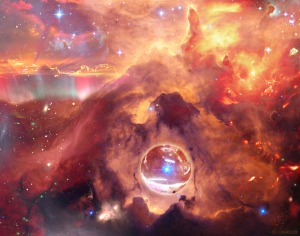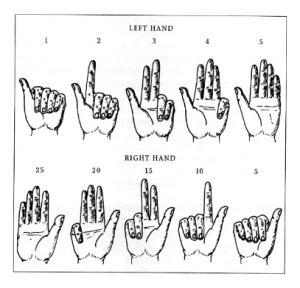
Here is my contribution to “Material Subjects or Real Objects” in Dundee
The Parmenidian equation Being = Thought has dominated philosophy from its inception. Nearly every philosophy since Parmenides, maybe every philosophy, has asserted and re-asserted this equation, this happy correlation, at the heart of their formulations. This equation naturalized the philosophical task and allowed philosophy to recognize itself within God’s plan, with Man at the center. Being = Thought is the doxa of philosophy; it is, to borrow a phrase from Deleuze, philosophy’s “image of thought.” And it is in this function that the equation acts as a veil that confuses and distorts, causing philosophy to become stagnant and too sure of itself. It is Being = Thought that prevented philosophers from recognizing what were the actual implications for Kant and his so-called “Copernican Revolution.” But even further, it allowed philosophy to commit a suspicious double move where it simultaneously sneered at the common sense that tells us that the world is exactly as it appears to us while asserting a much more fundamental version of the same story, where the world is exactly as we philosophers think it.
However, we are currently experiencing a crack in this correlationalist façade and new equations are being written. The relationship between Thought and Being can be formulated in four ways. Philosophy has experienced the first formulation for its entire existence. Of the three remaining possibilities, two are obvious. First, there is the path that I have chosen to call inflationary metaphysics. This formulation asserts the inequality of Thought and Being, but does so by asserting the primacy of Thought over Being. The primacy of Thought arriving via the creation of a special form of Thought that is not imprisoned by the empirical (e.g. mathematics). The second possibility, which I will call deflationary metaphysics, reverses this inequality by asserting the primacy of Being over Thought, where Being arrives as specific entities or objects that escape from Thought itself. The third possibility, which I will only be able to touch on, would then assert that Thought and Being extend beyond each other in a game of give and take, combining aspects from both of the other ways of formulating the relationship.
What this paper will attempt to do is to look into the two obvious ways of re-formulating the relationship by specifically looking at a representative from each camp: Quentin Meillassoux for the inflationists and Graham Harman for the deflationists. Specifically, we will be looking at the theories of causality that each of these thinkers puts forward. The issue of causality allows for a framing of precisely what Meillassoux and Harman do and do not share. But first a quick note: The terms inflationary and deflationary are meant to refer to the treatment of Thought under each of the new philosophies. If Parmenides functions through an act of equating Thought and Being, both Meillassoux and Harman undermine the equation by selecting one of the sides to privilege. At first sight, this terminology might be said to display a bias towards thought in that describing Meillassoux’s philosophy as inflationary metaphysics, the word inflationary bringing forth positive connotations, whereas Harman’s philosophy being assigned the term deflationary metaphysics might bring forth a negative connotation. This is not the case as these terms are relative to a particular side of the equation, meaning that if the philosophies under discussion are said to be relative to Being, instead of Thought, then the terms would necessary switch.
Curiously, Meillassoux and Harman’s theories of causality represent a radical re-evaluation of the Ash’arite School in Islamic Philosophy. Harman’s relationship with occasionalism, their theory of causality, is well-known, as he has specifically placed his own work within this history. But Meillassoux is no less influenced, although the influence is of the mediated variety. In The Incoherence of Philosophers, Al-Ghazali argues that cause and effect are related only through the contingency of God’s will and not through any form of necessity. The assertion that there exists a natural and thereby necessary relation between cause and effect, as argued by the Aristotelian philosophers, would eliminate the possibility of miracles and would thereby limit the power of God’s will. Such an encroachment on God’s powers by philosophy is illegitimate, and represents an example of demonstration exceeding what it is capable of understanding. Instead, Al-Ghazali argues that the relationship between cause and effect is contingent upon the will of God, meaning that any perceived necessity arises from both the habit of the observer, who has seen the effect follow the cause over and over before, and the habit of God, who has allowed a pattern to be formed so that humanity may recognize a miracle when it occurs. Harman has shown in his own work that the influence that occasionalism has had on 17th-century philosophy is significant. But the re-interpretation offered by Meillassoux and Harman is radical in its scope. We can understand Hume and Kant, central figures for the new metaphysics, as offering a form of occasionalism that only changes who sits in for God. Hume rejects God and therefore losses one of the strands of habitual action from Al-Ghazali’s own formulation. Without God, it is only humanity’s habit that truly matters. On the other hand, Kant awakes from his “dogmatic slumber” only to collapse the role of God and humanity into one figure, where cause and effect reside within us in the form of the categories. But Meillassoux and Harman both take a more radical line in the formation of their philosophies. Meillassoux’s assertion that the only necessity is contingency mirrors Al-Ghazali’s view of nature, but with only one caveat: There is no God and without God there is no causal relationship. Harman’s own appropriation of Al-Ghazali comes down to his assertion that two objects are never fully available to each other, and thus can only have a mediated relationship. Unlike Al-Ghazali, however, this mediation is not affected by God or his angels but the objects within the relationship only ever approach each other through an intermediary or sensual vicar.
To begin I would like to very quickly run through Meillassoux’s argumentation against correlationism. First, Meillassoux introduces what he calls the arche-fossil, a material “indicating the existence of an ancestral reality…anterior to terrestrial life.” The arche-fossil allows for the formulation of ancestral statements, which as statements about the non-being of Thought are not permissible under correlationism. The ancestral statement is then absolutized by Meillassoux into facticity which he describes as the necessity of contingency. Facticity provides Meillassoux with the principle of unreason, the idea that nothing exists for any reason whatsoever. The principle of unreason is the location of Thoughts ability to extend over reason. As Meillassoux will state, “In a rational world everything would be devoid of any reason to be as it is. A world which was entirely governed by logic, would in fact be governed only by logic, and consequentially would be a world where nothing has a reason to be as it is rather otherwise since nothing contradictory can be perceived in the possibility of such a being-otherwise.” In this world described by Meillassoux the laws of physics are reduced to mere facts and like all facts they can change with time.
What, then, is the problem? The first problem may appear as a rather shallow complaint against such a provocative philosophy. The question is what is the status of science in Meillassoux’s work. In the final chapter of After Finitude entitled “Ptolemy’s Revenge”, he establishes the great invention of modern science was a series of “cognitive processes…no longer of the order of myths, theogonies, and fabulations, and instead become hypotheses susceptible to corroboration or refutation by actual experiments.” So where does the problem lie? Gabriel Catren has pointed out that Meillassoux’s assertions on the principles of unreason are based on his dedication to the event named Cantor and the existence of the non-All. But the absence of a totality should not preclude the existence of localized order or necessity. As Catren writes, “the project of understanding the rational necessity of physical theories defines local problems of scientific knowledge…It is difficult, then, to understand why the supposed impossibility of providing a satisfactory rational global model for the ‘topology’ of absolute knowledge would imply the futility of such a local project.” Worse yet, Catren sums up Meillassoux’s argumentation in After Finitude as follows, “…we can say that Meillassoux’s ‘proof’ begins with an unquestioned (and probably false) presupposition (namely, that physics cannot discover any rational necessity in physical laws), and proceeds by means of an illegitimate ‘deductive’ inference (namely, that of absolutising a supposed limitation).” Meillassoux’s mistake is conflating the absence of a First and Final cause (those that would deliver an absolute necessity) with the absence of an efficient cause. This allows him to dismiss the laws of nature as merely factual arrangements that could change at anytime. But if this were true this would invalidate any experimental data that could corroborate or refute the “cognitive processes” that have replaces “myths and fabulations.” But things are worse for Meillassoux.
As I already said, Meillassoux should be understood as participating in the continuation of the legacy of Al-Ghazali and as such it would be enlightening to look a similar critique that Al-Ghazali himself invokes to critique his own position. “And if someone leave a book in the house, let him allow as possible its change on his returning home into a beardless slave boy—intelligent, busy with his tasks—or into an animal…If asked about any of this, he ought to say: “I do not know what is at the house at present. All I know is that I have left a book in the house, which is perhaps now a horse that has defiled the library with its urine and its dung, and that I have left in the house a jar of water, which may well have turned into an apple tree.” Now, Meillassoux has already dealt with part of this critique in his differentiating of chance and contingency. He defines chance as being the idea that transformation functions via a probability that would produce continual change, thereby resulting in the absolute instability of the world. On the other hand, he puts forward the concept of contingency as a process of potential transformation that is wholly without necessity and therefore, one transformation (or even no transformations) are as likely as any other. In forming the concept of contingency Meillassoux accepts as obvious the stability of the world, but this assumption is without reason. If it is true that the laws of physics are merely factual (i.e. contingent) then even the supposed fixity of the world would have to be called into question. Contingency would allow for the possibility that ever moment before this moment is merely the by-product of a mass formulation of the quanta of memory for all humans resulting in a collective belief in that all previous moments had actually occurred when in fact all of existence began with this very moment. This formulation would include supposed arche-fossils which did not exist the moment before. And without the arche-fossil, correlationism remains untouched.
On top of this Meillassoux’s split between chance and contingency ignores the real advancements in the formulation of probabilities in contemporary physics. In doing this he commits what we could call the Mallarme Fallacy. This fallacy is committed when one absolutizes our own ignorance of the outcome of a throw of the dice into a concept of absolute chaos. Such an approach ignores the other possibility involving probability, which is the assertion that probability is part of the very fabricate of the cosmos. The probability in quantum mechanics is not the same as that of dice or coins. The probability of throw or a flip is produced by out of our own ignorance of conditions effecting the movement of the object, whereas the probability of an electron’s location is part of the structure of the electron. Thus we can see that Meillassoux’s attempts to treat Thought as primary result in the construction of a world that is not only without reason but wholly irrational.
Harman’s philosophy aims to move from a philosophy of access, which is roughly equivalent to Meillassoux’s correlationism, to an object-oriented philosophy. Harman writes, “The drama of the world is never confined to that single layer where human consciousness happens to be located at any given moment. The phenomenal sphere fails to exhaust the riches of reality itself, and for this reason falls short of defining the full scope of philosophy…” For Harman, the move away from the questions of human access or the condition of possibility of human experience, is a move toward autonomous objects that are variously described as “vacuum sealed”, “receding”, “black boxes”, “black holes”, “having a molten core”, etc,; signifying that the inner life of objects are sealed off from everything else, all of these terms are meant to convey the return of the once discredited concept of substance, here revitalized into meaning that which escapes relation.
Harman’s argumentation begins with a re-working of Heidegger’s tool-analysis, which he locates as the central thesis of the Heidegger’s work (the greatest insight of the greatest philosopher of the 20th century). The failure of the hammer, for example, points to a hammer beyond my experience of banging nails or hit my thumb. Harman takes this notion as not just describing how humans interact or caricature their surroundings nor does this become a condition for all animal experience, instead he asserts that this is the condition of relation as such. All relations, whether between animate or inanimate substances or a combination of both, function through a process of caricature where the components of the relation reduce the other members to ridiculous versions of themselves. Whether it’s a baseball striking a window or a dodge ball striking the face of helpless child, the ball does not exhaust the possibilities of either object that it strikes. The result is a view of the world filled with objects, distributed along the vertical and horizontal axis and at all levels of zooming, that retreat from any and everything. The problem that follows is obvious and provides Harman the opportunity to present the most provocative aspect of his philosophy, namely vicarious causation.
Vicarious causation is a process that allows retreating objects to nonetheless come into contact with each other, although it is a contact that is always mediated, never direct. As Harman explains it, this occurs through the creation of a sensual object, the object of perception. For example, when I stand before a tree, the real tree withdraws from my perceptual presence but the sensual tree lies before me allowing for the creation of the intentional object within which perception occurs. Although this example deals with human experience, for Harman perception by a living creature and the causal relationship of inanimate objects are structured the same.
There are, I think, two related problems with Harman’s description of reality: one methodological, the other with the actual formulations. Harman’s horizon remains phenomenological, even if he criticizes it as being a theory of access. My criticism can be seen by returning to Heidegger’s tool-analysis. As Harman has already noted, Heidegger’s insight into the tool is not one insight among many but the central concept of his philosophy, namely the withdrawal of Being (even if in Heidegger it always remains a question for Dasein). The problem, and I believe that this is a problem with phenomenology per se, is that Heidegger moves from the particular, the hammer, to the universal, Being, but the move itself is illegitimate for phenomenology. The “withdrawal” of the hammer could be understood as a by-product of the finitude of a specific individual user of the tool and does not touch upon the structure of Being nor the condition of relation. In this re-formulation, tool-analysis becomes an epistemological issue not an ontological one, as it deals with the ignorance of the user and not the structure of use. In other words, the problem of the withdrawal of the hammer could be solved by a more dedicated individual who, ignoring all other aspects of his life, comes to function as an obsessive attempting to “complete” the hammer-knowledge.
This problem manifests itself in Harman through a conflation of perception and causation. It must be remembered that Harman wishes to move Heidegger’s tool-analysis out of the philosophy of access and the human and make it the condition of all relations no matter the individuals make up this relation. But to do this he must assert the equality of perception and causation. He writes, “All objects relate only on the inside of another object; all perception occurs on the inside of an object. Hence, causation and perception are equivalent to objects and the interior of objects. To say that the entire universe is made up causation and perception is to say it is made up solely of objects and their molten interiors…” But it should be noted that this action of equivalency occurs too quickly in Harman and thus it is not really clear how the quite brilliant descriptions of human experience that one finds in Harman’s work are actually related to the interaction between inanimate objects. And this brings us to the second problem.
The transference of vocabulary between the descriptions of human experience to that of inanimate interaction seems to confuse matters more than clarify. For example, we could return to the classic example from Al-Ghazali that Harman himself uses throughout his work: namely, fire burning cotton. Under Harman’s description there are five objects functioning within the relation of fire and cotton. There is the real fire, real cotton, sensual fire, sensual cotton and the intention as a whole. The fire that burns the cotton is the real fire as it is the active participant, but the cotton that it burns is the sensual cotton, as the real cotton has withdrawn in the subterranean or obscure cavernous world, away from all relation. On the other hand, one could describe the burning of cotton by saying that the presence of fire causes an increase in temperature resulting in the chemical transformation of the cotton into fuel and remnants thus combining with the oxygen in the air bringing about the burning of cotton. I could point out that in the second description that fire never touches the cotton either in that fire is always separated from the object that it burns through what is called the “flame interface.” One could complicate the second description through the introduction of mathematical formulas describing the chemical changes, etc. The question is what is the difference between these two descriptions. I am willing to admit that they may be completely compatible, with the first description serving as a philosophical version and the second roughly approximating a scientific description. But if this is so, then what is point? There are, however, problems that one would have to deal in make these two different perspectives of the same event. First, the question of active and passive is wholly absence in the second description as the absence of the heat, oxygen or the fuel would result in the absence of fire. Second, it is not entirely clear how the destruction of any object is possible under Harman’s description. If it is true that “Real objects can never be brought to presence even partially…”, then how can we understand what fire actually does to the cotton, an action that is different in kind and not degrees from the perceptual relationship. Harman himself has framed his attempt to formulate a new form of causality on the absence of such a theory in science and philosophy’s own rather pathetic position in contemporary society. But such a view of the relation between philosophy and science is return to Al-Ghazali and his assertion that demonstration must not trespass on the realm of metaphysics, a view that itself necessitates Al-Ghazali’s occasionalism.
It is the very inequality between Thought and Being that makes philosophy possible. This is already understood, although perhaps unconsciously, by nearly all the philosopher of the correlation. Strictly speaking, a true congruence between Thought and Being would result in the absolute presence of the world to our thinking selves. But this obviously does not occur. This explains the need in so many philosophers to tell a tale about the difficulty of thought due to some human failing, whether that failing be a stubborn horse, a girl and an apple or the dreaded boogie-boo of human nature. It is only through the incongruence of Thought and Being that the catastrophe of human consciousness can be understood by necessitating a whole series of rational discourses that are broadly named philosophy and science. It is in Meillassoux that the necessity of mathematical thought is proclaimed so as to be able to speak of the nature of reality independent of the human. Furthermore, Meillassoux presents us with a description of philosophy that should not be abandoned. “Philosophy is the invention of strange forms argumentation…To philosophize is always to develop an idea whose elaboration and defense requires a novel kind of argumentation, the model for which lies neither in positive science…nor in some supposedly innate faculty for proper reasoning. Thus it is essential that a philosophy produce internal mechanisms for regulating its own inferences.” Philosophy must be formulated under an epistemological condition so as to prevent it from running too far afield in its speculation. We should eye with suspicion any philosophy that claims to operate above or before epistemology, since the severing of Being and Thought provides Thought with an entire menagerie of mythical creature to become fascinated by. Meillassoux seems to have forgotten his own lesson and creates a world that is at least untenable, if it is no longer unthinkable. Ultimately, Meillassoux too readily abandons Being for Thought.
But this brings forward the other requirement of philosophy. We should eye with suspicion any philosophy that abandons its other condition of ontology. The delving into Being, in both the way it relates to us and in that with no relation, is the other condition of philosophy. This is the lesson that we must take from Harman’s philosophy. The severing of the congruence between Thought and Being must result in Being stretching beyond the reach of Thought. And Harman is quite right to reject materiality as the stuff of which Being is made. Materialism remains tied to a science that really no longer exists and it is time for philosophy to move on. But Harman is mistaken to allow the all too human experience of objects is to be the ultimate horizon of reality. It is highly probable that human experience simply misperceives the world as it is. But again this is to be expected when Being and Thought are no longer so intimately tied together.
Posted in Harman, Materialism, Meillassoux, Rationality, Science









Recent Comments